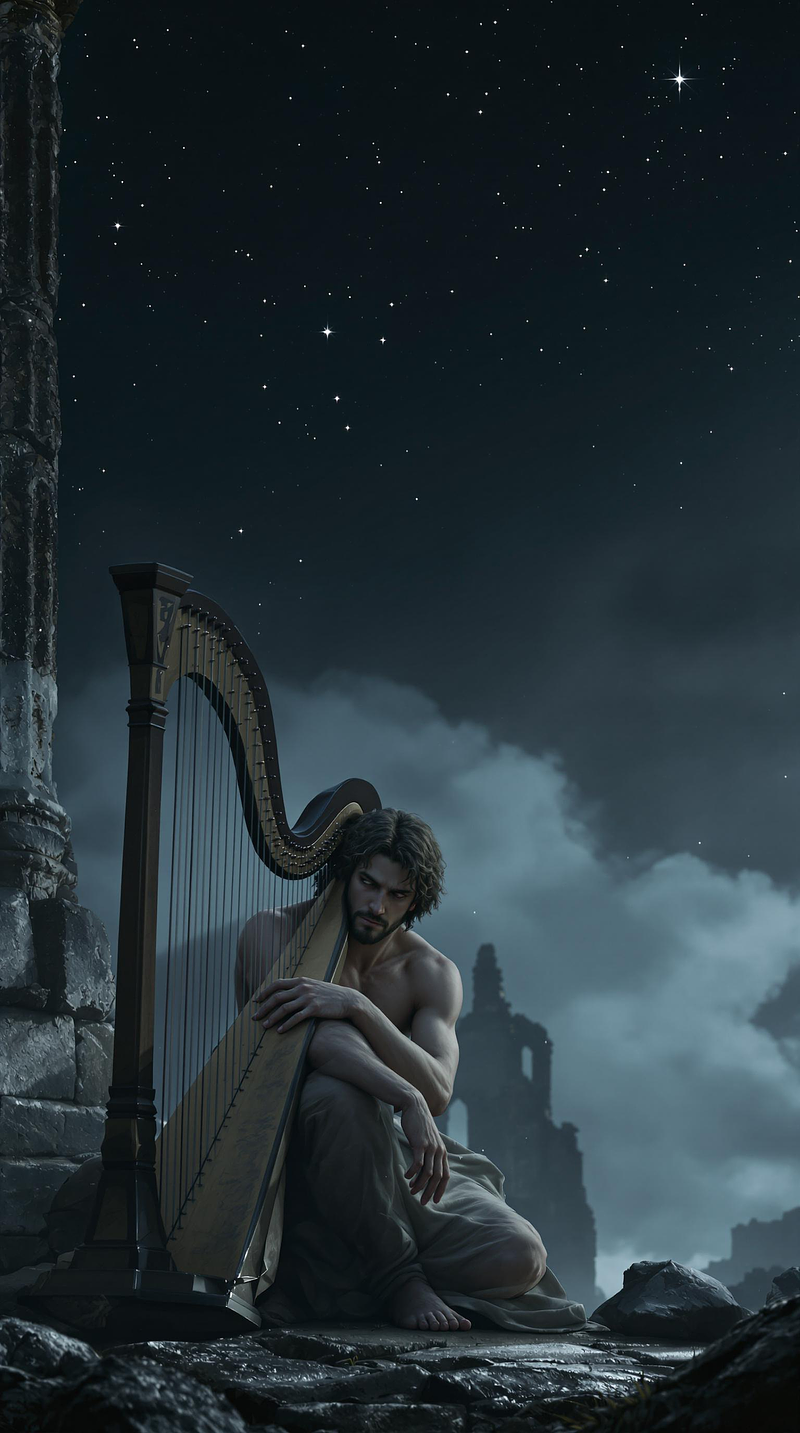7 months ago
The scene is set in the dead of night along a dark, tumultuous river. The moon is partially hidden behind thick clouds, casting faint, intermittent beams of light that barely break through the dense, stormy atmosphere. The air is filled with mist and a chill that permeates the scene. The river’s waters are wild, swirling violently in a frothy, chaotic dance.
Kalidasa, dressed in traditional ancient Indian poet attire (a simple dhoti and loose upper garment), is caught in the middle of the surging river. His face reflects fear and desperation as he struggles against the overwhelming force of the water, his eyes wide, and mouth gasping for air. The turbulent water splashes against his body, pulling at his robes, which cling to him, weighed down by the soaking water.
His hands are stretched out, desperately trying to grasp onto something, anything, that might save him. The sky above him is filled with dark storm clouds, lightning flashing intermittently, casting brief moments of bright illumination on his face, highlighting the tension and struggle in his features. His hair, wet and disheveled, is plastered to his forehead.
In the background, the river banks are barely visible, consumed by darkness. The trees lining the banks sway violently in the wind, their silhouettes trembling against the backdrop of the storm. Water droplets glisten on Kalidasa’s skin as they shimmer under the flashes of lightning.
Key Features:
Lighting: The faint moonlight, combined with sporadic flashes of lightning, creates a dramatic contrast between light and shadow. Kalidasa’s face and body are illuminated only intermittently, highlighting his struggle and fear.
Textures: Hyper-realistic textures are needed for the water—frothy, tumultuous, and realistic with splashes and ripples. Kalidasa's soaked clothes should look heavy and clinging to his body, with fine details showing the wet fabric and the struggle it presents.


